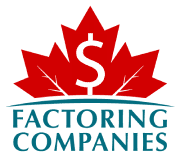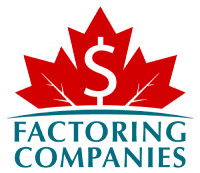
Businesses often focus on locking in the next sale or ensuring profitability. While these things certainly matter, cash flow is equally, if not more, important. Give us a few minutes, and we’ll walk you through why this is true and provide ways to optimize cash flow for SMEs that make it much easier to grow and thrive.
What is Cash Flow?
Cash flow is comprised of your cash inflows and cash outflows. In other words, it’s the money moving in and out of your business.
Cash Inflows
Cash inflows may come from a variety of sources, such as:
- Customer payments
- Loans or other business funding
- Tax refunds
- Interest income
- Returns or dividends from investments
Cash Outflows
Conversely, cash outflows are comprised of things like:
- Supplier payments
- Payments on loans
- Payroll
- Money used to purchase fixed assets
- Taxes
- Bank charges
- Dividends paid to shareholders
Negative vs. Positive Cash Flow
Generally speaking, SMEs should strive for positive cash flow.
- Negative Cash Flow: A business has negative cash flow when its outflows are greater than its inflows, which means it’s spending more than it brings in.
- Positive Cash Flow: A business has positive cash flow when its inflows exceed its outflows. This means it’s bringing in more than it’s spending.
Cash Flow vs. Profit
Cash flow and profit are both indicators of a business’s financial health, though they measure different things. Furthermore, you can’t infer anything about one simply by knowing about the other.
- Cash Flow: Cash flow only refers to the movement of money.
- Profit: Profit refers to how much money remains after all expenses are paid.
Let’s say that your SME takes out a loan. You will likely have positive cash flow. However, your business may spend more than it earns and be unprofitable.
Equally, your business could save for a year and purchase a large piece of equipment. Your past quarter’s cash flow report would likely show that you have negative cash flow. Yet, your business could still be profitable overall.
Why Implementing Positive Cash Flow Strategies is Essential
If you’ve ever had anxiety as payroll approached or delivery day drew closer because you weren’t sure if enough invoices would be paid in time to cover the balance, you know all too well the stress that cash flow issues can cause. However, cash flow concerns run deeper than this.
Daily Survival
Nearly two-thirds of small businesses across the globe struggle with cash flow, Intuit research shows. One in three say they’ve been unable to either pay vendors, loans, themselves, or their employees as a result. It’s issues like these – not being able to handle day-to-day expenses – that make cash flow management for SMEs crucial. Positive cash flow ensures you can pay your bills and keep your doors open.
SME Growth
Cash flow management also plays a vital role in business growth. For instance, two out of five Canadian businesses have lost $10,000 or more by foregoing a project or sales due to insufficient cash flow, Intuit reports.
It’s also worth noting that the inverse can be just as problematic. Businesses that consistently have very high positive cash flow margins may be in a more comfortable position. However, a cash surplus means the business isn’t reaching its full potential. That money should generally be invested in business growth initiatives or at least placed somewhere it’s growing.
8 Transformative Strategies to Optimize Cash Flow for SMEs
As you can see, it’s not just about maintaining positive cash flow. Effective cash flow management involves optimizing your inflows and outflows so you have enough cash to get through today and grow, yet also not limit your potential.
You can optimize cash flow by slowing and reducing your outflows or by accelerating and increasing your inflows. The strategies below leverage a variety of tactics in these areas.

1. Perform Regular Cash Flow Forecasts
A cash flow forecast predicts your inflows and outflows over a set period. It will help you:
- Ensure you’ll have enough cash for upcoming expenses
- Identify potential gaps early so you can address them before they’re a problem
- Ensure you’re not under-investing in your company
- Measure the overall financial health of your business
- Measure your progress if you’re implementing changes
It’s good practice to perform cash flow forecasts at least once monthly to take a more granular look at what’s happening. You can also run forecasts months into the future when working on long-term plans for investing or paying off debt.
If you use accounting software, it can supply the reports you need to perform these calculations manually. More advanced systems will provide you with projections.
2. Implement Invoice Collection Strategies to Increase and Accelerate Payment
The lion’s share of your inflows can likely be attributed to client payments. If you’re invoicing clients, the following strategies will help.
- Perform credit checks on your clients to ensure you’re not extending trade credit to clients who may not pay in full or on time
- Invoice immediately after goods or services are delivered
- Make it easy for customers to pay by offering digital payment options
- Send reminders before the deadline and follow up as soon as a payment is missed
- Provide an early payment discount
- Penalize late payments
3. Experiment with Vendor Negotiation for Better Terms
If you have good relationships with your vendors, ask if there are ways they can help make your payments more manageable. For instance, some may be willing to extend your payment deadlines. Others may offer a discount for purchasing in bulk or paying your invoice early.
4. Perform an Overhead Cost Review and Explore Reducing Business Expenses

Streamlining business operations for cash flow is an easy way to slow or reduce your outflows. Most businesses have many opportunities here but don’t always see them because they don’t set aside time to review what they’re paying and to whom. Schedule time to review overhead expenses every year at a minimum to see what you can cut or reduce.
Also, watch for things you can automate and talk to your team about any repetitive tasks they perform. At least 30 percent of activities in 60 percent of jobs can be automated, McKinsey reports. By identifying these opportunities in your company and finding the right tool to address them, your business will reclaim wasted time, be more able to focus on business growth or customer-facing activities, and save money.
5. Diversify Revenue Streams
Diversifying revenue for SMEs should be a top priority. Revenue diversity can boost your inflows and help protect your business from shifts that might otherwise damage your inflows. Consider:
- Exploring new sales channels
- Offering subscription services
- Developing new lines of complementary products or services
- Offering new variants of older products
6. Use External Financing Options Wisely
Not all debt is bad. If your business has a traditional term loan on real estate or a large purchase, the interest rate is good, the lender is reporting your timely payments to credit bureaus, and the asset you’re financing contributes to business growth, you’ve probably invested wisely.
Conversely, if you’re using high-interest or expensive funding methods, such as credit cards and merchant cash advances, or your funding is being used to mask a cash flow or profitability issue, you’re probably damaging your business in the long run.
When evaluating financing options for SMEs, ask yourself:
- Do I need this cash, or can I find another way to move forward?
- Are the costs reasonable?
- Is this going to help my business grow?
If your goal is to bridge a cash flow gap or ramp up due to growth or seasonality, invoice factoring may be a better solution. It provides instant payment on your B2B invoices and doesn’t create debt, so it can solve common issues while helping you avoid the problems associated with most other funding methods.
7. Maintain a Cash Reserve
Maintaining cash reserves is essential because it ensures you’re covered in the event of an emergency or unexpected expense or, at the very least, gives you enough of a buffer to make an informed decision rather than following a knee-jerk reaction.
Even though many understand this, one in four small businesses has less than a 13-day cash reserve buffer, JP Morgan reports. This is likely because saving is difficult due to the thin margins most have and the ongoing challenges of maintaining adequate cash flow.
If you’re struggling to build an emergency fund for your small businesses, consider treating it like your other payables and make a payment toward it every couple of weeks or once a month.
8. Regularly Review and Adjust Pricing
Most people don’t think about pricing strategies for cash flow optimization, but it’s an easy way to boost your inflows.
Just a one percent increase in prices boosts operating profit by almost nine percent, McKinsey notes. However, this strategy relies on keeping your current customer base intact and not losing sales. If you’re unsure which prices you can adjust, perform competitor research to ensure you’re pricing your offerings competitively.
Optimize Your Cash Flow with Invoice Factoring
Invoice factoring can accelerate cash flow and help make it more predictable, so it’s easier to budget and make ends meet. It’s also ideal for growing businesses and those impacted by business shifts. For industries like construction, where long payment cycles create significant cash flow gaps, construction factoring provides a reliable solution to cover expenses like payroll, materials, and equipment costs. You can use your factoring cash for whatever you’d like, be it payroll, equipment, or investing in technology to optimize your cash flow better. To learn more about how it works or get started, request a complimentary factoring rate quote.

About Factoring Companies Canada
Related Articles
Get an instant factoring estimate
Factoring results estimation is based on the total dollar value of your invoices.
The actual rates may differ.
CLAIM YOUR FREE FACTORING QUOTE TODAY!
PREFER TO TALK?
You can reach us at
1-866-477-1778
Get an instant factoring estimate
Factoring results estimation is based on the total dollar value of your invoices.
The actual rates may differ.
CLAIM YOUR FREE FACTORING QUOTE TODAY!
PREFER TO TALK? You can reach us at 1-866-477-1778









